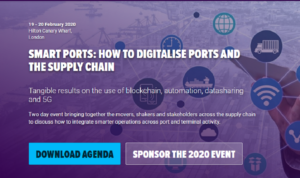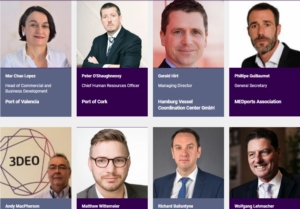Seaports, as part of urban centers, play a major role in the cultural, social and economic life of the cities in which they are located, and through the links, they provide to the outside world. Port-cities in Europe have faced significant change, first with the loss of heavy industry, emergence of Eastern European democracies, and the widening of the European Community (now European Union) during the second half of the twentieth century, and more recently through drivers to change including the global Sustainable Development Agenda and the European Union Circular Economy Agenda.
Angela Carpenter • Rodrigo Lozano, Editors
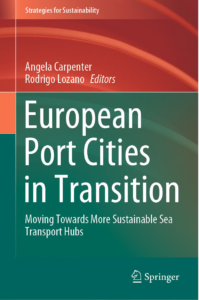
For more information relating to the book at the Springer website or to buy please refer to:
https://www.springer.com/gp/book/9783030364632
This book examines the role of modern seaports in Europe and considers how port-cities are responding to these major drivers for change. It discusses the broad issues facing European Sea Ports, including port life cycles, spatial planning, and societal integration. May 2019 saw the 200th anniversary of the first steam ship to cross the Atlantic between the US and England, and it is just over 60 years since the invention of the modern intermodal shipping container – both drivers of change in the maritime and ports industry. Increasing movements of people, e.g. through low-cost cruises to port cities, can play a major role in changing the nature of such a city and impact on the lives of the people living there. This book brings together original research by both long-standing and younger scholars from multiple disciplines and builds upon the wider discourse about sea ports, port cities, and sustainability.
CONTENTS:
1 Introduction, Chapter Summary, and Conclusions from the Book.by Angela Carpenter & Rodrigo Lozano
2 Port-City Redevelopment and Sustainable Development by Paul Fenton
3 Proposing a Framework for Anchoring Sustainability Relationships Between Ports and Cities by Angela Carpenter & Rodrigo Lozano
4 Port-City Redevelopment and the Circular Economy Agenda in Europe by R. Karimpour, Fabio Ballini & Aykut I. Ölcer
5 Technological Change and Logistics Development in European Ports by Michele Acciaro, Katharina Renken & Naouar El Khadiri
6 From Planning the Port/City to Planning the Port-City: Exploring the Economic Interface in European Port Cities by Karel B. J. Van den Berghe & Tom A. Daamen
7 Spatial Restructuring of Port Cities: Periods from Inclusion o Fragmentation and Re-integration of City and Port in Hamburg by Dirk Schubert
8 Governance and Planning Issues in European Waterfront Redevelopment 1999–2019 by José M. Pagés Sánchez & Tom A. Daamen
9 Proposing a Holistic Framework to Assess Sustainability Performance in Seaports by Lea Fobbe, Rodrigo Lozano & Angela Carpenter
10 Analysing Port Community System Network Evolution by Bening Mayanti, Jussi Kantola, Matteo Natali & Juha Kytola
11 Touristification of European Port-Cities: Impacts on Local Populations and Cultural Heritage by María J. Andrade & João Pedro Costa
12 Analysing Organisational Change Management in Seaports: Stakeholder Perception, Communication, Drivers for, and Barriers to Sustainability at the Port of Gävle.by Rodrigo Lozano, Angela Carpenter & Kaisu Sammalisto
13 Integrating Governance and Sustainability: A Proposal Towards More Sustainable Ports by María Ángeles Fernández-Izquierdo, Idoya Ferrero-Ferrero & María Jesús Muñoz-Torres
14 The Changing Interplay Between European Cities and Intermodal Transport Networks (1970s–2010s) by Justin Berli, César Ducruet, Romain Martin & Sevil Seten
15 The Separation of Ports from Cities: The Case of Rotterdam by Carola Hein & Paul Th. van de Laar
16 Integrated Port Cities: The Case of Hamburg by Michele Acciaro, Katharina Renken & Christopher Dirzka
17 Societal Integration of Ports and Cities: Case Study on Spanish Ports by Nuria Nebot Gómez de Salazar & Carlos Rosa-Jiménez
18 Socio-economic Costs and Benefits of Seaport Infrastructure Development for a Local Environment. The Case of the Port and the City of Świnoujście by Izabela Kotowska, Marta Mańkowska & Michał Pluciński
CHAPTER ABSTRACTS
Chapter 1 – Introduction, Chapter Summary, and Conclusions from the Book
by Angela Carpenter and Rodrigo Lozano
Currently, European ports, and the cities within which they are located, face significant changing economic circumstances, together with technological, social and cultural pressures for change, as they seek to become more sustainable. Drivers for change include the global United Nations Sustainable Development Agenda and the European Union Circular Economy Agenda. As major players in the cultural, social and economic life of cities, ports can provide economic well-being and support a strong identity for those cities and their local communities. City sustainability requires elements including conservation of resources and minimisation of waste while supporting and sustaining the local population through the provision of services such as housing and public transport. Ports and cities have therefore come to understand that in order to grow and become more sustainable, they have to work collaboratively to achieve their individual and combined goals.
Chapter 2 – Port-City Redevelopment and Sustainable Development
by Paul Fenton
This chapter presents an overview of recent literature on sustainable development in port cities and highlights particular challenges for port-city redevelopment. These include: the impacts on cities of air or noise pollution; green8 house gas emissions; infrastructure challenges (including energy supply and inland transportation); urban development in and around port areas; plus formal and informal mechanisms or instruments used to alleviate negative impacts or resolve problems related to these challenges. The chapter then considers the case of Stockholm to illustrate how such challenges are manifested at the local level. The Stockholm case highlights, for example, the challenge of integrating inland waterways and short-sea shipping; diverse challenges related to passenger travel (cruise ships, ferries, small boats, etc.) including energy supply, waste and wastewater, use of chemicals; relocation of cargo terminals and other port operations outside of the city and related impacts on urban infrastructure; and competition for urban space, both in and around port areas and in waterfront areas. Such examples illustrate patterns which are described in wider literature and observed in other cities. The chapter then outlines the City of Stockholm’s approach to handling such challenges whilst aspiring to achieve sustainable development, using the literature review as a framework to indicate potential discrepancies, problems or opportunities for Stockholm and other port cities. The chapter provides some recommendations for port cities working to improve environmental quality and achieving sustainable development.
Chapter 3 – Proposing a Framework for Anchoring Sustainability Relationships Between Ports and Cities
by Angela Carpenter and Rodrigo Lozano
Seaports are important players in the world, with a key role in global maritime trade and the movement of people. Historically, many cities grew up alongside ports, gaining economic benefits from the flow of goods and from the migration of people seeking work and improved economic circumstances. Port Cities are some of the most economically strong and competitive cities in the world. However, a weakening of the ties between ports and cities has been identified over recent decades. This chapter analyses how ports and cities might work together, through a collaborative approach, to become a more sustainable port-city. A review of literature on ports and sustainability, cities and sustainability, and collaboration between ports and cities, identified what they can do to become more sustainable. A framework for anchoring sustainability between ports and cities was developed to help them collaborate to become more sustainable as part of a joint system, showing that integration of the sustainability aspects of economic viability, environmental orientation, and social orientation is necessary to achieve a holistic port-city. To become more sustainable, ports and cities should work together in a collaborative way so that both can benefit moving forward.
Chapter 4 – Port-City Redevelopment and the Circular Economy Agenda in Europe
by Reza Karimpour, Fabio Ballini and Aykut I. Ölcer
In the era of globalisation, our world is in transition and there are challenges every day, such as climate change, and natural resource depletion. These environmental challenges threaten our lives and necessitate taking measures to transition toward resilient and reliable low-carbon developments. In this context, sustainability has recently gained substantial attention across sectors. In the face of increasing growth in the world economy, together with natural resource depletion, there is a need for new economic approaches. As a response to the improvement in resource performance, economies have started to explore ways not only to reuse products but also to restore more precious material and energy inputs. The concept of a ‘Circular Economy’ (CE) can promise a move to sustainability in businesses and economies. Sustainable relations between port city stakeholders is one of the emerging sectors. However, globally, port cities are within an economic system that is structured on the linear ‘take-make-dispose’ model, not sustainable models. During the last two decades, ports and their urban areas have been increasingly facing environmental challenges. Ports can have significant environmental impacts due to the types of activities that take place in them, resulting in negative externalities such as air and water pollution that mirror the destructive linear economy models at port-cities. Continual globalisation based on trade liberalisation, with its increasing cargo transport, has resulted in a significant increase in pressures on port infrastructure and city resources, which should be addressed in a sustainable way. A limited number of studies on European port cities’ sustainability have focused on ports under the CE approach, specifically within the ports’ waste management and energy efficiency context. This chapter reviews of ports and development, city and development, and explores Port-City redevelopment within the CE agenda that has been undertaken in the context of European ports. The review identifies what some European port cities have been doing to become more sustainable, with the help of a CE approach. It discusses challenges and potentials in European port cities and concludes on how ports are currently realising the potential of CE strategies, in particular for redevelopment and also competition in the market. Furthermore, it identifies how EU ports have voiced a need for further regulation to support the transition to the circular economy.
Chapter 5 – Technological Change and Logistics Development in European Ports
by Michele Acciaro, Katharina Renken and Naouar El Khadiri
Digital technologies are a key element in the logistics sector development. The so-called digital revolution that began in the 1980s, on the basis of the increasingly widespread use of automation, artificial intelligence and robotics in production processes, is changing the face of world logistics, a change often referred to as Logistics 4.0. Building on the impact of digitalisation on other sectors, port cities are also expected to see the emergence of new business models in the coming years, made possible by the advancement of digital technologies. Some researchers and practitioners even foresee the development of a global cargo handling system similar to the Internet, called Physical Internet (PI), in which goods would be moved seamlessly on an intermodal network at very low costs thanks to state-of-the-art data management technologies. The development of a PI-based logistics model requires new methods of monitoring and managing data, on the physical characteristics of the goods, as well as on the financial flows and traceability of the products; and ports are likely to play a critical role in favouring the uptake of such data collections and use. One of the most promising enablers to this vision is blockchain, a technology that would make it possible to document an increasingly large number of characteristics of a product or a commodity. The shipping sector cannot be caught unprepared, and adequate support is also needed inside ports. This chapter reviews the current technology and digitalisation trends in ports, advancing hypotheses on how they are likely to change port-city cargo—but also people—mobility and influence port logistics.
Chapter 6 – From Planning the Port/City to Planning the Port-City: Exploring the Economic Interface in European Port Cities
by Karel B. J. Van den Berghe and Tom A. Daamen
In the last three decades, planning agencies of most ports have institutionally evolved into a (semi-) independent port authority. The rationale behind this process is that port authorities are able to react more quickly to changing logistical and spatial preferences of maritime firms, hence increasing the competitiveness of ports. Although these dedicated port authorities have proven to be largely successful, new economic, social, and environmental challenges are quickly catching up on these port governance models, and particularly leads to the (spatial) policy ‘conflicts’ between port and city. This chapter starts by assessing this conflict and argues that the conflict is partly a result of dominant—often also academic—spatial representations of the port city as two separate entities. To escape this divisive conception of contemporary port cities, this chapter presents a relational visualisation method that is able to analyse the economic interface between port and city. Based on our results, we reflect back on our proposition and argue that the core challenge today for researchers and policy makers is acknowledging the bias of port/city, being arguably a self-fulfilling prophecy. Hence, we turn the idea of (planning the) port/city conflicts into planning the port-city’s strengths and weaknesses.
Chapter 7 – Spatial Restructuring of Port Cities: Periods from Inclusion to Fragmentation and Re-integration of City and Port in Hamburg
by Dirk Schubert
In this chapter three periods of spatial inclusion, fragmentation, and re-integration of port and city functions are analysed with a focus on the Hamburg region and related to corresponding governance structures. First, when the port and city had been a functional and spatial unit until the beginning of the 19th century. Second, a later period of separation in several phases until the 1980s began. Since the 1960s, deindustrialisation and containerisation drove ports away from cities, leaving areas along the old waterfront as a challenge to planners for re-integration of urban and port functions. Finally, since the beginning of the new millennium, a third period arose, when options for a re-mix of port and city became possible again. By analysing these historical phases, it becomes possible to more precisely analyse changing interdependencies between city and port.
Chapter 8 – Governance and Planning Issues in European Waterfront Redevelopment 1999–2019
by José M. Pagés Sánchez and Tom A. Daamen
Since the first redevelopment projects appeared in the 1960s in North-America, urban waterfronts in port cities around the world have experienced continuous spatial and functional change. Waterfront redevelopment started as an opportunity to recover brownfields for urban uses and new relations with the water, but rapidly became a target for investors and politicians to leave their mark on the port city landscape. Too many planners, waterfronts have, thus, become a symbol of capital accumulation, consumerism, and of cities attempting to economically revive or reinvent themselves. Four decades after the first waterfront projects of this kind in Europe, it is possible to evaluate the results of this post-modern urban refurbishing, and most importantly, reflect on the sustainability of the transition that has taken place. Since the publication of an earlier volume on European Port Cities in Transition (Hoyle and Pinder, in The Dock & Harbour Authority 79(887):46–49, 1992), sustainable development has gradually become an important objective in urban and port policies. The aim of this chapter is to assess how European waterfront redevelopment projects are influenced by this objective across the continent. This has been done by making an actor-institutional comparison of projects in six European port cities, following a renewed trend in planning research that seeks to expose and understand the ‘rules of the game’ in urban governance and planning practices. This institutionalist perspective leads to a fresh understanding of port-city relationships in Europe, and the role of recent waterfront projects therein. This account of the 1999–2019 period focuses on how key actors negotiate and attempt to reconcile the inherent tensions involved in planning sustainable waterfront redevelopment schemes, and identify the forces that enable or prevent them to do so.
Chapter 9 – Proposing a Holistic Framework to Assess Sustainability Performance in Seaports
by Lea Fobbe, Rodrigo Lozano and Angela Carpenter
Seaports have increasingly been pressured by the shipping industry and port communities to increase their sustainability efforts and performance. Sustainability reporting has been proposed as a way to assess performance. Although several frameworks have been developed for sustainability reporting, few focus on performance (for example the Graphical Assessment of Sustainability Performance (GRASP)). For seaports, sustainability reporting has mainly focused on coverage of environmental issues, and on the port as an individual organisation. A critical review of assessment approaches was conducted, resulting in the identification of 424 port sustainability-related indicators; these were categorised, synthesised, and then compared with the Global Reporting Initiative (GRI) guidelines. The findings show differences in the dimensions and number of indicators of the assessment approaches. GRI categories were modified and expanded for the environmental, economic, and social dimensions. Two new assessment categories, ‘port system’ and ‘interlinking issues’, were developed. This chapter proposes the Holistic Assessment of Sustainability Performance in Seaports (HASPS) framework, based on GRASP, and expanding the GRI by the addition of 75 port specific indicators, giving a total of 211 indicators. This will allow seaports to assess their sustainability performance over time, to better communicate their 2ustainability efforts, and to benchmark against other seaports.
Chapter 10 – Analysing Port Community System Network Evolution
by Bening Mayanti, Jussi Kantola, Matteo Natali and Juha Kytola
Ports have played an important role in facilitating exchanges among countries since the day when inland transportation was poor. As ports become hubs for the global supply chain, they have to maintain their competitiveness not only by reassuring their efficiency, reliability, accessibility to the hinterland, and sustainability. In addition, there is a constant challenge from all operational parties of the port to acquire needed information or to trust information received, due to multiple legacy systems and platforms that do not integrate with each other, and to the lack of real-time updates. There are differing agendas between parties and, sometimes, distrust within the multi-stakeholder ecosystem leads to working in silos. This jeopardises seamless data exchange and cooperation across the port value chain, resulting in significant inefficiencies. Port community system (PCS) can enhance communication and simplify administrative process resulting economic and environmental benefit for actors in the supply chain. The invisibility of the benefit, actors’ heterogeneity and significant investment to develop the system resulting in reluctance in implementing PCS. This chapter aims to study the evolutionary mechanism behind the process of PCS network development using lessons learned from industrial symbiosis network development and network trajectories theory. The PCS network development follows a serendipitous and goal-oriented process that can be categorised into three stages: pre-PCS network, PCS network emergence, and PCS network expansion. This chapter contributes to the exploration of network evolution and documents lesson learned to foster PCS implementation.
Chapter 11 – Touristification of European Port-Cities: Impacts on Local Populations and Cultural Heritage
by María J. Andrade and João Pedro Costa
Touristification of European port-cities is a contemporary process of globalisation in the age of the information society, adding cruise and marine specific dynamics to the promotion of cities as products and destinations for short-breaks, congresses or holidays. Port-cities have a long history of investment on the waterfront, adapting these spaces through at least three cycles since industrialisation, in a 50 years process of waterfront regeneration that started in the late 1960s. Touristification corresponds to a new (fourth) stage in a continuous port/city redevelopment process. Global tourism research reveals several undesirable impacts on cities, for example through gentrification (displacement) of local inhabitants or a change of the city’s identity into a generic image, where living conditions are impacted by higher housing prices. Alongside the negative impacts of cruise tourism is the profile of this type of tourist, e.g. as part of the so-called “low-cost tourism”. Confronted with unlimited growth of touristification and its negative impacts, major port-cities want to control this process. Effective monitoring tools, strong administrative coordination, and agile spatial planning and management instruments are determinant for port-cities to respond to the touristification process. Port-cities have struggled to orientate this process to define which types of tourism they want to promote or limit; cruises are part of the equation. In port-cities, touristification demands highly effective spatial planning answers, with inter-sectoral and trans-scale policy answers occurring simultaneously.
Chapter 12 – Analysing Organisational Change Management in Seaports: Stakeholder Perception, Communication, Drivers for, and Barriers to Sustainability at the Port of Gävle
by Rodrigo Lozano, Angela Carpenter and Kaisu Sammalisto
Ports are under increasing pressure to become more sustainable. While, some ports have been including sustainability into their operations; in general, this has been mainly addressed from economic and environmental perspectives and technological or policy-related approaches. There has been little research on organisational change management for sustainability in ports. This chapter analyses organisational change efforts for sustainability at the Port of Gävle. Twenty-three face-to-face interviews were conducted with various stakeholders. The chapter presents the findings and results on a stakeholder materiality matrix, insights on the perception of sustainability by the port stakeholders, the coverage and performance (measured through) ranking of drivers for and the barriers to sustainability of the Port of Gävle. The chapter also shows that stakeholders are important when addressing sustainability and managing organisational changes, where it is important to know the coverage and the performance of drivers for and barriers to change. This way ports can better address sustainability through a holistic approach that encompasses the four dimensions of sustainability (economic, environmental, social, and time), stakeholders, and the six approaches (legislative, technological, financial, cultural/social, voluntary initiatives, and organisational change management).
Chapter 13 – Integrating Governance and Sustainability: A Proposal Towards More Sustainable Ports
by María Ángeles Fernández-Izquierdo, Idoya Ferrero-Ferrero and María Jesús Muñoz-Torres
Ports are under increasing pressure to become more sustainable. A fundamental requirement to integrate sustainability into all structures, policies, and processes of an organisation, such as a port, is to have corporate governance fully committed to sustainable development. However, sustainability frameworks in the port industry deal mainly with the economic and environmental dimensions, as well as operations and logistics issues, and technological and policy-related approaches, without addressing explicitly governance aspects. In addition, there has been limited research in the field of port sustainability and governance, with studies paying attention to how ports address sustainability from an operational perspective. This chapter is focused on the role of ports’ corporate governance to integrate sustainability into their management systems in order to fill this gap. The objective of this chapter is to define a framework that integrates both sustainability and corporate governance into port authority policies, strategies and activities, as a necessary condition to achieve a more sustainable organisation. The proposed framework has been developed based on the results of a literature review and on the best practices included in international corporate governance references. The framework for Port Authority Sustainability Governance Model (PASGM) places sustainability at the center stage and establishes five action areas aligned with sustainability principles. This chapter contributes to improving the understanding of internal governance elements of port authority and clarifies the links of corporate governance with sustainability. It also provides some guidelines on key issues of governance that should be considered to integrate sustainability in the management system from a strategic perspective.
Chapter 14 – The Changing Interplay Between European Cities and Intermodal Transport Networks (1970s–2010s)
by Justin Berli, César Ducruet, Romain Martin and Sevil Seten
European cities, like most of the world’s cities, are to some degree dependent upon maritime transport for their development, as more than 90% of seaborne trade volume is carried by sea. This also applies to Europe’s external trade. While cities possessing ports play a crucial role in the distribution of goods traffic in such a context, the maritime influence exerted by global trade on non-port, inland cities have not been so far studied from a combined sea-land perspective. The results show a differentiation of the European territory in terms of modal specialisation, core-periphery, polycentricity, and intermodal centrality/accessibility. We map the maritime specialisation of European cities in recent decades, showing that combined sea-land centrality has stable but different relationships according to the type of place considered. The conclusion discusses the outcomes of our results for policy and further research on coupled networks and urban studies.
Chapter 15 – The Separation of Ports from Cities: The Case of Rotterdam
by Carola Hein and Paul Th. van de Laar
Since industrialisation began in the 19th century, some ports have been moving away from the cities that once hosted them. That separation was only possible if the land was available where new port basins, industries, and other infrastructure could be constructed and where port activities could prosper without being restricted by urban functions. The port of Rotterdam represents an extreme example of port-city separation. This chapter shows how the port of Rotterdam transformed from a staple port into a transit port. Port activities moved towards the North Sea in four steps that were related to technological, institutional, and trade pattern changes and changes in port-city relations. Such transitions highlight the close relationships between trade patterns, technological innovations and changing governance patterns. Each expansion required close collaboration between business leaders and the municipality because administrative borders needed to be expanded and infrastructure constructed. The growth also created friction among the various stakeholders in the region. The merchants of the staple markets protected their trades and traditions, whereas the harbour barons that benefited most from the high-volume trans-shipment of bulk commodities pushed the expansion of the port. To illustrate these steps in the separation of port and city, the chapter takes the case of petroleum as a key example. While beneficial for the economic development of the port –and to some degree, the city–the separation of port and city has led to a loss of connection between port and city institutions. The chapter concludes by briefly examining the challenges and opportunities of port and city separation in terms of economic, spatial and cultural development.
Chapter 16 – Integrated Port Cities: The Case of Hamburg
by Michele Acciaro, Katharina Renken and Christopher Dirzka
Many cities around the world are port cities, and yet, industrialisation of port activities and changes in port operations have resulted in the separation between the city and its port is becoming more evident. Some ports have moved away from urbanised areas, while in others fences and security barriers are being erected to separate a city from the water areas. Space is contested, and tension is increasing between urban and industrial use of the waterfront areas. In some port-cities, however, the proximity of city spaces to industrial activities is unavoidable, and managing the relations between port operations and the city becomes one of the main priorities of the port managing companies (PMC). The governance structure and relation of the PMC to the municipalities near the port defines the organisational framework within which the PMC needs to operate in order to find ways to reconcile the tension between urban spaces and the port. This tension requires careful management of port stakeholders, a well-thought communication strategy and the development of specific initiatives aimed at reducing negative external effects associated with port activities. Through the analysis of the ase of the port-city of Hamburg, particularly its smart-port and smart-city strategies, this chapter illustrates the complexity of successfully managing integrated port-cities. The closely-knit collaboration between the Hamburg City-State Municipal Government and its Port Authority have allowed it to overcome some of the issues that emerged in the past, but as port operations change the question is how long the conflict of resource use between a growing city and the third-largest European port can be kept at bay.
Chapter 17 – Societal Integration of Ports and Cities: Case Study on Spanish Ports
by Nuria Nebot Gómez de Salazar and Carlos Rosa-Jiménez
Ports are, frequently, segregated places and fairly inaccessible to local communities. In some cases, the industrial activity is incompatible, for security reasons, with citizens’ uses. In other cases, privatisation of port space has restricted access to a very small part of the population, for example, some marinas. In this sense, many ports are considered barriers that hinder citizens’ access to the sea. A way to address this is through the social integration of ports. Port authorities and administrations are becoming increasingly more aware of the need to incorporate the demands of the local communities, and to develop activities and services that foster the use of the port, rapprochement with the sea and, generally, foster the maritime culture among the citizenry. Previous research regarding the social integration of ports has allowed examples of good practices to be put forward at a European level. This chapter seeks, on the one hand, to discuss different social integration strategies at ports using indicators and parameters from other previous studies; and, on the other hand, to showcase some recent port initiatives as examples of good practices for the port-city social integration along the Spanish Mediterranean coast. The chapter proposes seven strategies to structure the research content, each of which is discussed and related to a real initiative or project implemented at ports. The analyses comprise an inventory of innovative solutions that can be implemented at other ports. The aim of the seven strategies is to provide inspiration for other port areas that wish to bring the port and maritime culture to the citizenry and local communities.
Chapter 18 – Socio-economic Costs and Benefits of Seaport Infrastructure Development for a Local Environment. The Case of the Port and the City of Świnoujście
by Izabela Kotowska, Marta Mańkowska, and Michał Pluciński
The positive changes in the relations between a port city and its port, as manifested in sustainable development policies for port cities and seaports, have not managed to eliminate conflicts connected with spatial aspects of seaport development. The conflicts are, to a large extent, connected to an uneven distribution of socio-economic benefits and costs that port operations generate for the local environment. The research in this chapter provides an answer to the question: What impact does the implementation of large infrastructural projects in seaports have on the local community and seaport economy? A comprehensive Seaport’s Social Cost-Benefit Analysis (SCBA) method was developed for estimating the socio-economic benefits of seaport development, based on the case study of the planned deepwater container terminal in the Świnoujście seaport (in Poland). The results show that 97% of direct benefits are generated for the national economy (global/national level), whereas only slightly above 3% remain in the port city (local level). The main beneficiaries are cargo shippers who consume nearly 90% of the benefits. Concurrently, the full social costs of seaport operations development are borne by the local environment. The balance of the socio-economic benefits and costs, expressed in monetary terms, is nevertheless positive at the local level. The benefits are additionally improved when non-monetary values are (e.g. investment, innovation, transport accessibility, demographic change) are taken into account. The benefits are achieved indirectly and over a long-time horizon, but eventually, they have a positive effect on the structural changes in the local economy and community. In particular, this impacts the cities and regions with less-developed economies, which cope with negative changes in the demographic structure of their local communities—this is exemplified in the case of the Świnoujście seaport.
Source:Springer
https://www.springer.com/gp/book/9783030364632












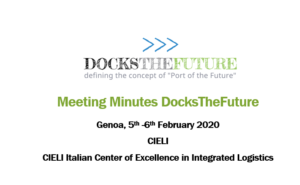
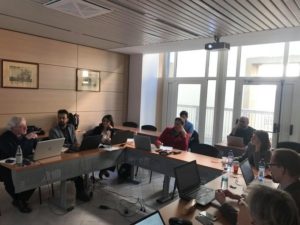






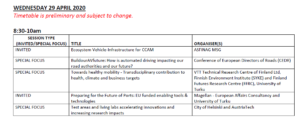

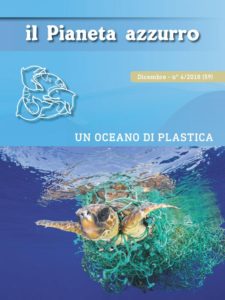



_1.jpg)


